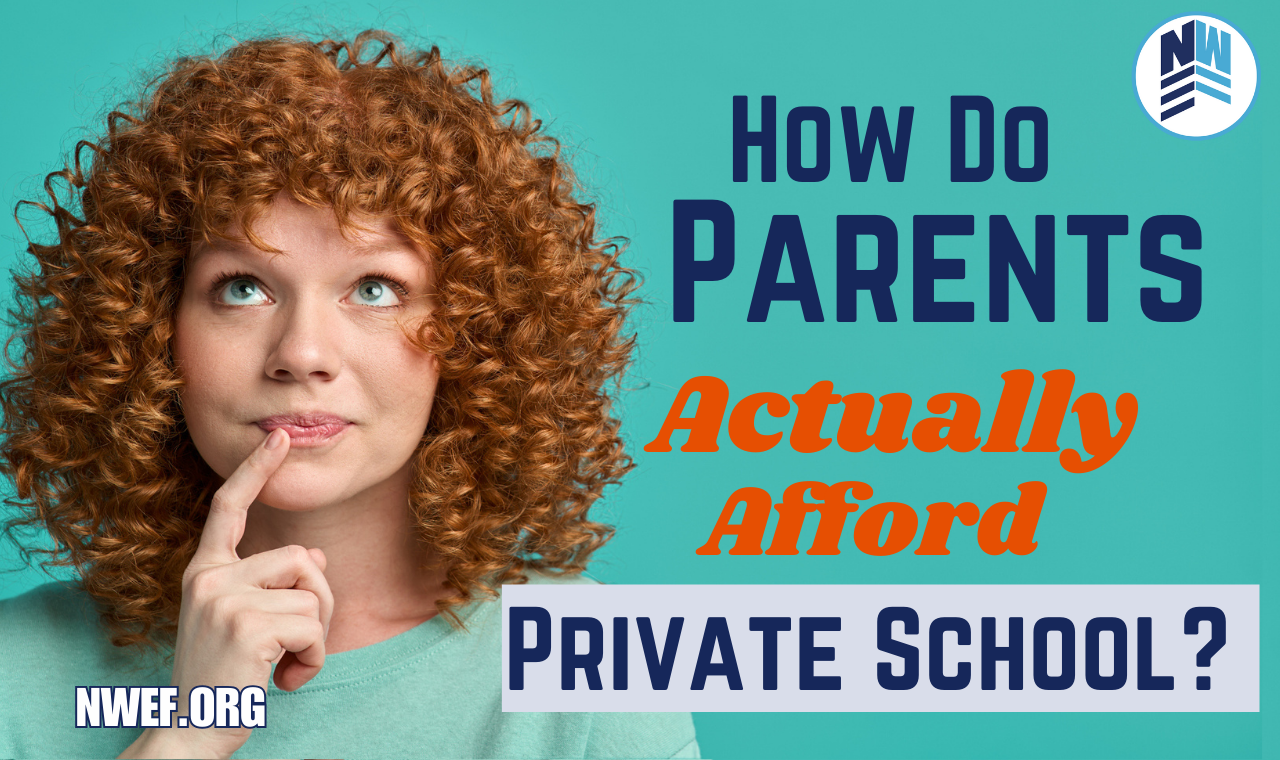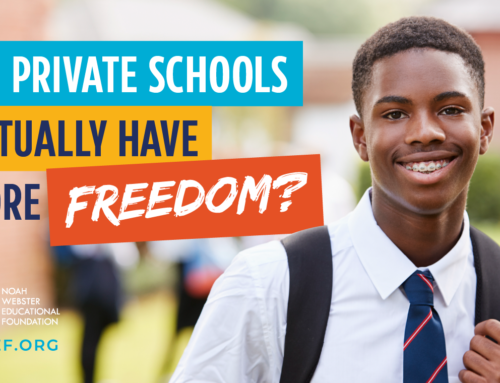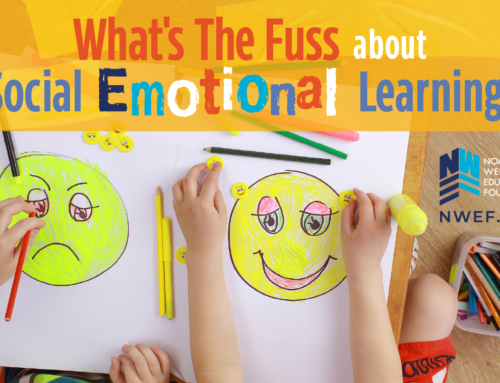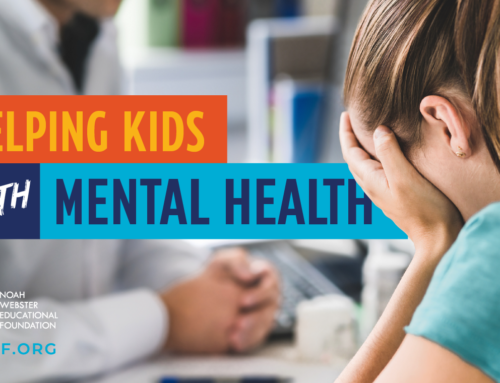
A year ago, Forbes published an article detailing the sharp rise in private school enrollment since the COVID-19 pandemic.
There are several different reasons for this trend, not the least of which is parent’s dissatisfaction with the public school’s virtual teaching methods and ideological agendas. Private schools are just going to continue gaining popularity as long as parents have these concerns. But, Forbes also says that, “Unfortunately, private education comes with huge financial considerations that only compound when you have more than one child. This means it’s likely that many parents who want to find a way to stay within the private school system they chose cannot necessarily afford to.”
They’re spot on. Private schools are pricey. Maybe you like the idea of having different school options, but the expenses seem too steep. Maybe you feel that it could never be an option.
But before you make up your mind for sure, let’s dig a little deeper. Is private school even a possibility for the average family?
Private School vs. Public School: What Are The Cost Differences?
Unlike public school, private school tuition is not free. Public schools offer government-funded education for every child in the country.
On top of paying tuition fees, you must be ready to cover other expenses if you send your child to private school: school supplies and transportation. Granted, parents of public school students must pay for school supplies too. So public school is not technically free. In 2021, parents paid an average of $840 on school supplies according to The National Retail Federation. And costs are projected to be even higher in 2022.
Keep in mind that you may need to purchase uniforms, sports equipment, and music or art supplies, depending on the school and what classes or extracurricular activities your child is into. Not to mention technology, books, field trips, and more. It can all add up quickly.
Then, there’s the issue of transportation. If you send your child to private school, you can pretty much guarantee you’ll have to drop them off and pick them up from school every day! On the other hand, many public school students have access to the school bus and get free transportation every day.
Added onto this are taxes. A large portion of citizens’ taxes in the U.S. go into funding the public school system—even if you aren’t sending your child to public school. If you’re considering private school, you’re potentially looking at paying for an institution you aren’t using and juggling all the costs of your child’s (or children’s) education.
All of this creates the picture of quite a financial burden for the average American.
Private School Tuition Costs
In contrast to the free tuition of public school, “The national average private school tuition is $12,119 per year,” says Private School Review. Private elementary school, on average, costs over $11,000, while private high school is more like $15,000.
However, it’s important to do your research on your local private schools. Tuition costs really depend on the state and school. In fact, many cost much less than you would think. In Virginia, the school with the lowest tuition cost is Southeast Academy, at $1,500, with many others in the $2,000 to $5,000 range.
In fact, it’s interesting to note that the majority of private schools spend less on their students than public schools do. And it seems like private schools do a better job at education, despite the expense gap. U.S. News says “On college entry tests such as the SAT, NAIS found that students in private schools consistently out-performed their public school peers in all subject areas.”
This only underscores the already apparent fact: parents in the U.S. are gravitating more and more toward private school education. It has a good reputation. Children consistently come out of private schools as well-educated, well-equipped adults.
But what about those parents who are on a tight budget? Do they get left behind in this push for school choice?
How You Can Afford Private School
All private schools offer financial aid at some level. Each one has a policy of their own and an application process particular to them. About 28% of all private school students in America receive financial aid, so it’s quite common. If you have a legitimate need, you have a good chance of obtaining the help you require to put your child through school.
There are several different types of financial aid. Grants and loans are the most common, but some also offer scholarships.
A grant is basically when the private school gives a year’s tuition to a child as a gift. You must apply directly to the school to get a grant. Also, private schools sometimes offer monthly payment plans, which can take a lot of the pressure off you if you’re unable to dish out money in large chunks. And if you have multiple children whom you wish to enroll, ask if the school offers sibling discounts.
You may consider applying for a loan to cover all or some of your child’s education although this will mean you will need to apply to a third party, as private schools do not offer loans. But if you can find a private lender who is willing to let you take out a loan, this can be a great option.
Another thing you should research are school choice vouchers. Several states have been creating opportunities for school choice that can actually aid you in paying for your child to be educated outside of the public school system.
These vouchers give you the opportunity to use some of the funds that you would get if you sent your child to public school and transfer those to private schooling instead. Not all states offer this opportunity, but if yours does, it may be worth your while to learn if you qualify and how to apply.
Applying For Financial Aid
If you plan to apply for financial aid from a private school, be sure to check out the information on their website. This will tell you when applications are due, how to apply, and give you an idea of when you’ll hear back from them on your request. Also, don’t assume right off the bat that you aren’t qualified to receive financial aid! Many factors, including your family size and similar details, are considered when a school is looking at your application.
On the other hand, don’t assume that a grant will cover your child’s entire tuition. Sometimes schools choose to award you a grant that only covers part of the price of tuition. In fact, it’s probable that no financial aid option will cover your child’s education completely. You may need to find multiple avenues of support, such as applying for a school choice voucher and then applying for a grant to cover the rest of the cost. Or seek opportunities to take out a loan for school supplies and apply for a grant to cover tuition.
An Affordable Private School Education
It’s clear to see that there are many options for paying your child’s way through private school! You may decide to find an affordable school in your area and pay out-of-pocket. But you might need a little help. Or a lot. Whatever your needs may be, there are often systems already in place that are designed to take the financial pressure off of you and give your child a good education.
If you’d like to read more, check out our guide to finding the right private school for your child.




